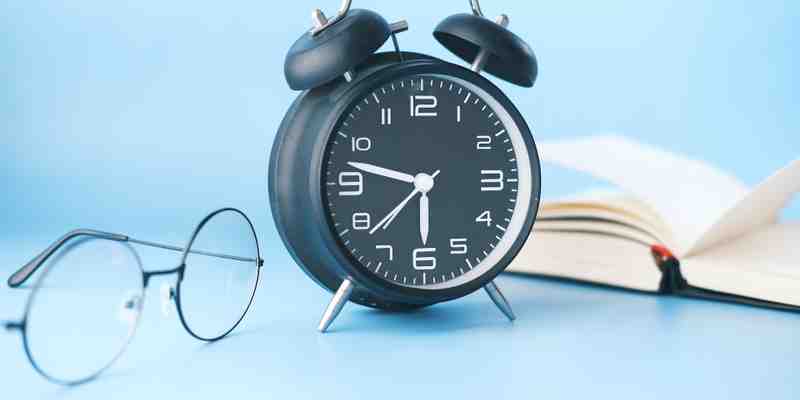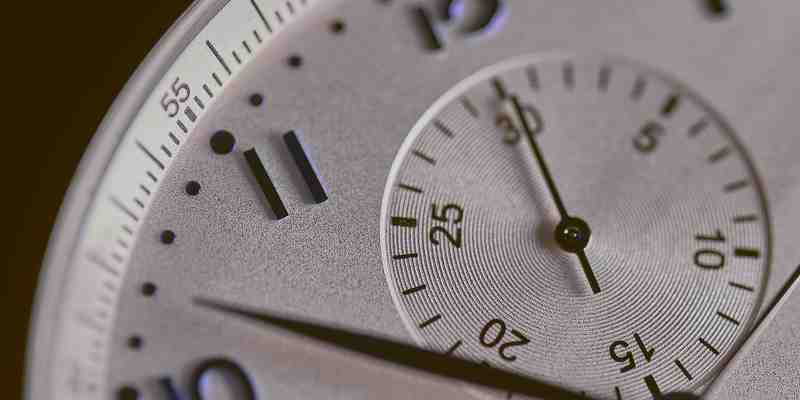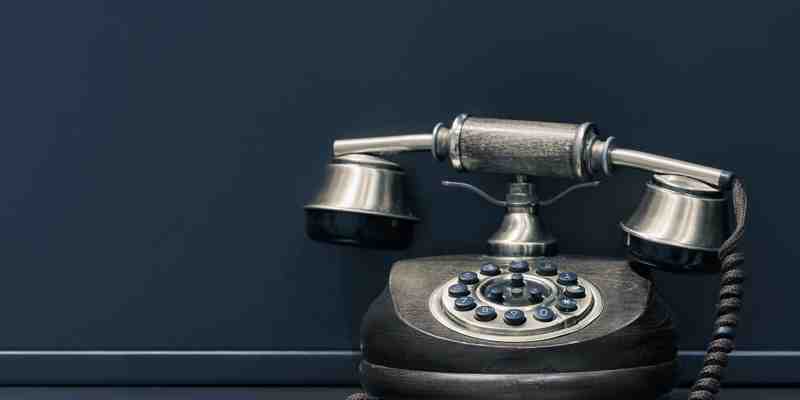Chinese Numbers Part IV: More Number Usages in Mandarin
Numbers have many uses. In our previous article, we talked about two of the most common and important usages for Chinese numbers, namely counters and ordinal numbers.
In this article, we will dive further into more common use cases.
In our everyday lives, there are situations when we need to use numbers not just as simple numerals - telling time and dates, talking about phone numbers, asking for prices, using decimals and fractions, etc.
So how do we do all these things in Mandarin Chinese?
Let's do some more exploration in the ocean of numbers!
Time and Dates
We have published a useful and thorough article on this topic: Time, Days of the Week, and Dates. If you're interested, feel free to check it out!
Here, we will take a look at time and dates in Chinese again, but with a main focus on the number part.
Time (Clock)

In short, to tell the time in Chinese, we follow the format: hr 点(时) min 分 sec 秒.
Here, 点 (diǎn) or 时 (shí) is the hour unit, 分 (fēn) is the minute unit, and 秒 (miǎo) is the second unit.
Obviously in reality, when we talk about time, we generally will not specify how many seconds have passed. Some examples are:
一点二十二(分) 1:22
两点三十(分) = 两点半 2:30
六点零二(分) 6:02
九点十分 9:10
十二点十五(分) = 十二点一刻 12:15
The numbers used here are simple Chinese numerals. Pay attention that 两 is used for two o'clock. But when we are saying two minutes past a clock, we say "零二分".
We also generally omit 分 when it's used as the last unit. This is a common rule in Chinese.
However, we wouldn't skip 分 for 九点十分, as there is only one character between 点 and 分, and it will sound strange without the 分 unit.
We can use 半 for half past a clock.
We can also use 一刻 (yī kè) to mean 15 minutes past a clock. 一刻 means a quarter and a quarter of an hour is 15 minutes. However, we typically don't use 三刻 for 45 min past a clock (you can but it's not used commonly).
Time (Duration)

Apart from telling what time it is at a given moment, we also talk about the duration for a period of time. To do so, we use:
小时 (xiǎo shí) - hour. Sometimes 小 can be omitted.
分钟 (fēn zhōng) - minute. Sometimes 钟 is omitted.
秒钟 (miǎo zhōng) - second. Sometimes 钟 is omitted.
We can combine them as hr 小时 min 分 sec 秒. This is very similar to the clock format above.
Some examples are:
一(个)小时 1 hour
两分钟 2 minutes
二十二秒(钟) 22 seconds
两个半小时 = 两小时三十分 two and half hours = 2 hour 30 min
两分半 = 两分三十秒 two and half minutes = 2 min 30 sec
两秒半 two and half seconds
一小时二十分零二秒 1 hour 20 min and 2 sec
三小时十五分 3 hours 15 min
Overall, the duration of time is very similar to telling the clock in Chinese.
But here we must use 小时 for the hour, while we typically use 点 for the hour for the clocks.
Note that when used alone (the first three examples), we often do not omit any characters in the time units.
And when we count halves (we have gone over this in our last article on basic number usages as well), a measure word can be used (see the bold text in the second three examples). Though the 分 and 秒 units here can directly follow the number, but not for 小时.
Again, we use 两 for two (when it's the first word), and 零二 for 2 min past some hour, or 2 seconds past some minute.
Unlike time for clocks, we generally do not skip any units for the duration.
Dates

For dates, we have:
年 (nián) - year.
月 (yuè) - month.
日 (rì)/号 (hào) - day. 号 is used casually and 日 is more formal.
The format for dates in Chinese is yyyy 年 m 月 d 日.
Years
Year numbers are slightly different from our familiar Chinese numerals.
二零二二年/二二年 - year 2022
二零二零年/二零年 - year 2020
两千年 - the year 2000 (can also mean two thousand years)
二零零二年/两千零二年/零二年 - year 2002
一九九八年/九八年 - year 1998
九十年代/九零年代 - the 90s
In general, the year number is literally just pronouncing each of the single digits of that year one by one.
For zero, although 零 is still commonly used, sometimes you may see the 小写 number character 〇 used. For example, 二〇二〇 may be used for 2020.
We can also simplify the year number to only the last two digits, like 二二年 instead of 二零二二年 for the year 2022.
We would generally use 二 for 2, except for the year 2000, where we simplify it as 两千年, which is in fact the same as what we say for two thousand years.
For the years between 2000 to 2010, there are two ways to say them, either 二零零x or 两千零x (for the year 200x).
Just an additional note, when you want to express a certain decade, you can use 年代 (nián dài), which means era. People either say 九十 or 九零年代 for the 90s, similar to the 80s and 70s, etc.
We mentioned how to count years in our last article on basic number usages. To recap, 年 as the year unit can be directly used following the number:
一年,两年,三年…… one year, two years, three years…
半年 half a year
两年半 two and a half years
Months
For months, from January to December, it's very straightforward in Chinese:
一月,二月,三月,四月,五月,六月,七月,八月,九月,十月,十一月,十二月
Simply add the number from 一 through 十二 in front of 月 (yuè, month).
As we mentioned briefly in our previous article, when we want to count months, we must use the measure word 个 to avoid confusion:
一个月,两个月,三个月…… one month, two months, three months…
半个月 half a month
两个半月 two and half months
Note that for two, 两 is used for counting, and 二 is used for dates.
Days
For the day part, we use 日 or 号.
Again, the day number is also very simple - just put the Chinese numerals in front of 日/号.
一号,二号,三号……三十号
一日,二日,三日……三十日
(1st, 2nd, 3rd… 30th)
When we count days, however, we generally would use 天 for counting, which also means day. Though 日 can be used as well.
The difference is again, 两 is used for counting while 二 is used for dates.
两天,三天……
一日,两日,三日……
(one day, two days, three days…)
半天 half a day
两天半 two and half days
For counting halves, 天 is used more commonly than 日.
Year-Month-Day Altogether
To put everything together, the full form of dates should be quite straightforward for you now.
二零二二年二月二日 2002/02/02
二零一零年十二月九日 2010/12/09
两千年五月二十七日 2000/05/17
It's simply assembling the year, month, and day together.
For counting years/months/days altogether, we have:
一年零两个月 one year and two months
两年零三个月 two years and three months
三年半 three and half years
四年零八个月 four years and eight months
五年三个月零七天 five years three months and seven days
六年四个月十五天 six years four months and fifteen days
七年十一个月十天 seven years eleven months and ten days
Generally, when we count years and months together, we typically add 零 for the month, to connect the year and month parts.
If we also count the days after the months as well, we can skip 零 for the month but add it for the days if it's < 10 days. If it's ≥ 10 days, typically no 零 is needed.
Phone Numbers

Phone number is also a common usage for numbers, but it's different from numerals.
The general rule is, simply to pronounce each number individually.
There is only one thing to keep in mind, the pronunciation/pinyin for "1" is no longer yī, but yāo instead.
For example:
110 - yāo yāo líng (emergency number to the police department in China)
119 - yāo yāo jiǔ (emergency number to the fire department in China)
120 - yāo èr líng (medical emergency number in China)
5831320044 - wǔ bā sān yāo sān èr líng líng sì sì
2766622189 - èr qī liù liù liù èr èr yāo bā jiǔ
(Note: these two are random number combinations for demonstration purposes.)
As we can see, when there is a repeated number that occurs consecutively, we still spell them out one by one.
Prices

Another very common occasion in our life to use numbers is when we talk about money. And it's an essential and important skill to have to be able to understand how much money people are talking about!
There are a few words we need to know about money.
钱 (qián), money in general, sometimes used at the end
元 (yuán)/块 (kuài), Yuan or Chinese dollar. 元 - formal, 块 - casual
角 (jiǎo)/毛 (jiǎo), Jiao or Chinese dime, 1/10 of a Yuan. 角 - formal, 毛 - casual
分 (fēn), Fen or Chinese cent, 1/100 of a Yuan
Here are some example use cases:
两元(钱) = 两块(钱), Two Yuan, ¥2.00
一块五 = 一块五毛钱 = 一元五角, ¥1.50
六块二 = 六块两毛钱 = 六元两角, ¥6.20
十三元七(角) = 十三块七(毛), ¥13.70
二十元两角二 = 二十元两角两分 = 二十块两毛二, ¥20.22
The general rule is that the formal units pair up together - 元 combines with 角, and the casual ones come together - 块 comes with 毛.
The use of 钱 is optional, you can add it to the end, often used to avoid confusion. For example, 两块 can mean "two Yuan", but it can also mean "two pieces". But 两块钱 only means "two Yuan".
When we combine 元 (块) with 角 (毛) and 分, the smallest unit can be omitted. Note that if we do omit the last unit, then 钱 must be skipped as well.
At last, pay attention to the use of 二 and 两 for two. Since this is similar to counting - number + unit, 两 should be used. But if the unit is omitted (that is, the number is at the end), then 二 should be used.
Decimals and Fractions

So far, we've only looked at integers, with a little bit of mentioning of halves. But there are times when we need to use decimals and fractions. How do we do that?
Let's take a brief look at these non-integer numbers!
Decimal Numbers
It is actually quite easy to say decimals in Chinese. The only new word we need to learn here is 点 (diǎn), which means point.
Let's first see some examples:
一点三1.3
二点五 2.5
三点七五 3.75
四点四零 4.40
五点零九八 5.098
六点三零二 6.302
In general, before 点 ("."), it's the integer part, which is the normal Chinese numeral that we have talked about extensively.
After 点, it's the decimal places. We are simply putting each decimal digit down individually, with characters ranging from 零 (0) to 九 (9). This is similar to how we say the year numbers.
Recall that we also use 点 for hours when we tell time, and very commonly, 分 for minutes is omitted. And this makes time sound very similar to decimals.
The difference is that for time, the minute part after 点 is also a complete numeral, while for decimals, the number after 点 is a combination of signal digits.
See the below comparisons:
八点二二 8.22 - decimal
八点二十二 8:22 - clock
二点三七 2.37 - decimal
两点三十七 2:37 - clock
九点零二 9.02 - decimal
九点零二 9:02 - clock
The only problem is when the clock is only a few minutes past a clock, the Chinese may sound just like a decimal number. In such a case, it's better to add 分 for the clock to avoid confusion. Of course, the context may be enough to clear everything up.
Fractions
Fractions are used commonly in our daily lives. To say fractions in Chinese, the word we need to learn is 分之 (fēn zhī). The format is
denominator + 分之 + numerator = numerator/denominator.
Some examples are:
二分之一, 1/2 or a half
三分之一, 1/3 or a third
四分之一, 1/4 or a quarter
四分之三, 3/4 or three quarters
九分之二, 2/9
十六分之七, 7/16
As we can see, fractions are also quite straightforward. Typically, both the denominator and numerator numbers are integer numerals, that is, all the Chinese numerals we've gone over extensively.
From this, we can easily derive how percentages work in Chinese as well. The word we use is 百分之, as now a hundred (百) is our denominator.
百分之二 2%
百分之十 10%
百分之二十 20%
百分之五十五 55%
The number after 百分之 is the number before the "%" sign.
Final Thoughts
Numbers are ubiquitous in our lives.
In this four-article series on Chinese numbers, we went over in detail Chinese characters and the numeral system from simple numbers below 1000 and all the way up to a trillion, how to use them as counters and ordinal numerals, and other usages including date and time, phone numbers, money, decimals, and fractions (this article).
Of course, just like there is no limit to numbers, there are endless things we can learn about numbers in the Chinese language.
We've put extensive efforts into presenting a thorough guide on the Chinese number system, covering important aspects that are important to our everyday life. But you don't have to stop here!
Nevertheless, hope this guide provides you with enough information that you're now able to write down the Chinese for any numbers and speak to others about numbers in Chinese!